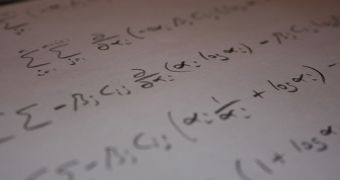The following article tries to explain in more comprehensive terms why dividing by 0 should yield undefined results and it shows how Mathematics can earn serious money. If you have trouble adding together two numbers of 3 digits each, then this might not be for you.
Basically, dividing any number by zero yields an undefined result because attempting to define it would lead to a contradiction. Let's remember the basics of division: r is a ratio of any two numbers a and b (r=a/b) which satisfies the condition a=r*b. So, what we're trying to do here is to replace b by 0, as in r=a/0. But this means that r*0=a (A) should be true, and we all know (don't we?) that r*0=0. So, for any r, unless a=0, there's no solution for the equation (A).
Some say that infinity satisfies the equation (!) requirements, but infinity is not a number. And this can be proven mathematically, since it is considered (based on the definition of infinity) that adding any number to infinity, the result would still be infinity, so infinity=infinity+1=infinity+2[...]=infinity+n. But wait, this gives 1=2[...]=n, meaning that all integers are equal. This would make mathematics lack sense and impossible to operate with, so we would again stumble upon contradictions.
“So,” you'll say, “let's just assume that a=0”. Very well then, let's note the result of 0/0 with y, whatever it was. Then y would have to satisfy the condition y*0=0 (B). It may seem OK at a first glance, since 1*0=0, 2*0=0, etc., but the problem is that every number satisfies (B), which again states that all numbers are equal, like previously obtained, which, of course, is equally wrong. That's why the result of this division should be left undefined.
Is this already giving you a headache? Well, maybe finding out that there's big money in Mathematics will help you recover. Thus, people from UCLA's department of Mathematics were handed a generous $100.000 prize for their discovery of the largest Mersenne prime number so far. Prime numbers are those which only divide by 1 and by themselves without resulting in fractions or a rest different from 0, such as 1, 2, 3, 5, 7 or 11, while Mersenne numbers are positive integers which are one less than a power of number 2 ( as in Mn=2n-1). Obviously, Mersenne primes are integers that are one less than powers of 2, which only divide by 1 and themselves.
There were only 44 Mersenne primes known until recently, when the Great Internet Mersenne Prime Search (GIMPS) distributed computing project found two more, one on August 23rd and one on September 6th 2008, both crossing the milestone of 10 billion digits. The numbers were discovered by the UCLA-based network comprised of 75 Dell Optiplex 745 computers running Windows XP and verified on entirely different computer systems and algorithms.
The latest prime, the one discovered in September, is called M46, although its most reduced form is 2n-1 (more specifically 243.112.609-1), has nearly 13 billion digits. This makes the number of atoms in the universe looks astoundingly pale by comparison (only 80 digits). To get a better picture, try to imagine that typing the whole integer at a 12pt font would create a 30 mile(48.3 km)-long number, while the document would fit into about 13MB of plain text. Edson Smith, the leader of the research project at UCLA stated, “We're delighted. Now we are looking for the next one, despite the odds”.

 14 DAY TRIAL //
14 DAY TRIAL //